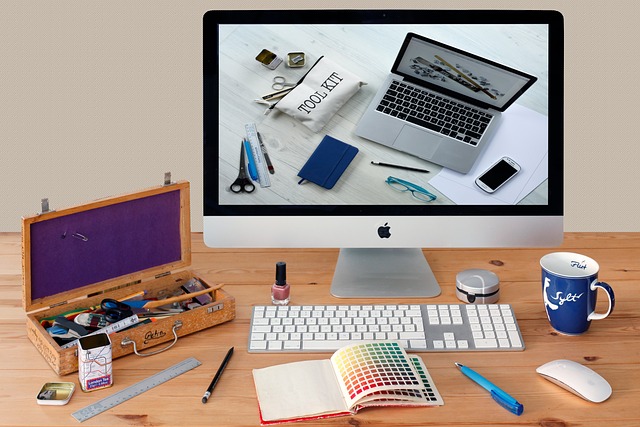
Are you interested in becoming a graphic designer? In the past, this would have required three years of university education, followed by relocating to a major city and completing an internship at a design agency. These steps would have resulted in significant disruptions, lengthy travel times, and extremely high expenses.
If you are a graphic designer, you may need to acquire expertise in multiple areas simultaneously, including book layouts, digital illustration, and corporate identity design. Nevertheless, we suggest that you focus on improving your skills in a particular field. Typography, logos, book design, product packaging, web design, user interface design, and user experience design are some of the most prevalent specializations in graphic design.
Although it may appear daunting at first, simply focus and gradually advance in your career. Now, let’s examine the sequential process of becoming a graphic designer.
1. Study the fundamentals
People who are not involved in the field of graphic design often have the misconception that it simply involves having knowledge of specific software. For instance, you may often come across casual remarks such as, “Sharon can handle the brochure since she is familiar with Photoshop.”
Learning graphic design is not solely dependent on knowing Photoshop, just as knowing how to use your phone’s video camera does not make you a professional film director. The focus is instead on gaining an understanding of graphic design history, mastering the fundamentals of graphic design theory, and acquiring the necessary skills for your craft, such as color palette selection, typeface choice, and grid creation, among others.
Studying graphic design is not solely about acquiring knowledge but primarily about applying it actively. Therefore, alongside studying, you must consistently engage in creating your own designs and enhancing your proficiency in meeting professional design requirements.
3. Learn the software
With that being said, software alone is not sufficient for becoming a graphic designer. However, some software is still necessary. Therefore, what software should you purchase?
Adobe’s widely recognized software tools, including Photoshop, Illustrator, and InDesign, continue to be the benchmark and the preferred choice within the industry.
Broadly speaking, Photoshop is used to edit raster images such as photos, Illustrator is used to edit vector images such as illustrations and icons, and InDesign is used to create layouts for print and digital publications. But they all have capabilities beyond that, and they’re increasingly used interoperably within a single workflow.
Because they are the industry leaders, it is not a coincidence that they are also the most expensive, as a subscription to the Adobe Creative Cloud is necessary.
Besides other specialized creative software like After Effects for motion graphics and Premiere Pro for video editing, there is an additional aspect to consider, which is the high cost. Nevertheless, if you happen to be a student enrolled in an accredited course, whether it be full-time or part-time, you can avail of a considerable discount.
If you are not currently enrolled in a course, there are more affordable alternatives. The Affinity suite, which includes Affinity Photo, Affinity Designer, and Affinity Publisher, closely resembles Photoshop, Illustrator, and InDesign, and can be purchased at a one-time, low cost.
More and more professionals are utilizing these tools, and it is still possible to save your work in Adobe formats. Additionally, if you prefer not to incur any costs, there are free tools such as Canva, Figma, and Gravit Designer that are great options to begin your graphic design journey.
4. Set up your home studio
To effectively study and train as a graphic designer remotely, a significant amount of time, effort, and dedication is necessary. Therefore, it is not feasible to pursue this career path while sitting lazily on the couch or casually perched on a kitchen stool. Instead, it is essential to establish a dedicated home office space. However, it is important to note that a considerable amount of space is not required, as the primary essentials typically consist of a desk, chair, and laptop.
It is always a good idea to add a few personal touches like arty prints and a couple of inspiring books in order to be relaxed and comfortable.
To maintain a tidy mind, ensure that you keep your desk clean and uncluttered. Additionally, remember to hydrate well, schedule occasional breaks for exercise and walking. When working in graphic design, particularly from home, it is important to be aware of the potential damage to your spine over time. Therefore, it is crucial to establish proper habits early on, as this will greatly increase the likelihood of maintaining good health throughout your career.
5. Keep yourself organized
However, simply having the correct applications is not sufficient. In a work-from-home setting, there is no supervision or immediate accountability. While this is beneficial for reducing stress, it also implies that you are solely responsible for maintaining organization and productivity.
To successfully work from home, it is crucial to possess both organizational skills and strong determination. According to Bonnie, establishing a routine and schedule is essential. Planning the week in advance on Mondays and being aware of what can and cannot be accomplished over the following five days is advisable. Creating a list of definitive objectives to strive for and taking small steps towards them daily is recommended.
6. Create a portfolio
After dedicating sufficient time to studying graphic design and improving your skills, you will gain the necessary confidence to pursue job opportunities or search for freelance clients. In order to showcase your abilities effectively, it is essential to develop a portfolio.
In the past, portfolios utilized big physical books that individuals would transport with them during interviews. Nowadays, portfolios are mainly digital, available as either a PDF or a website, which enables individuals to showcase their top work in a convenient and easily understandable format. This is essential as employers and clients usually have limited time to dedicate to reviewing portfolios.
When you are first starting, you face a dilemma similar to the chicken and the egg. To obtain paid work or even an unpaid internship, you require a portfolio. However, what should you include in your portfolio before acquiring paid work?
If you have completed a course, you will have student projects that can be included. Alternatively, if you are self-teaching, one approach could be to address an imaginary brief, as if you were working for an actual client.
It is recommended to share your portfolio online, such as on Behance, and with individuals in the industry you know, to obtain feedback before including it in your portfolio. Regardless of how confident you feel about its quality, others often offer different perspectives that you may not have considered. Additionally, another approach to adding content to your portfolio could involve offering free graphic design services to friends or charitable organizations.
7. Follow established graphic designers
Sometimes overlooked, this step of seeking inspiration and tips from other artists is actually a simple and effective way to expand your creative skills. Before developing one’s own creative process, every artist finds inspiration from somewhere and eventually becomes a source of inspiration for others.
In order to gain a better understanding of renowned graphic designers and artists and enhance your appreciation of their work, it would be beneficial to familiarize yourself with their work and connect with them through social media. This will enable you to learn about their creative process and comprehend their work more effectively in the future.
As you create a few graphic design pieces, you will gradually develop your own style, which will become clear to you.
8. Get some work experience
To begin, submit applications for entry-level positions. It is not significant whether the position is paid or unpaid since the experience gained will be more valuable in the long term. This holds particularly true if you are commencing at a reputable company or agency and require someone to endorse you or provide a reference letter in the future.
It is always recommended to gain real-world experience through an internship or entry-level job, even if you have a degree in graphic design. By doing this, you can also include your new creations in your portfolio, ensuring that you follow copyright laws and attribute the designs to the respective companies you collaborated with.
By gaining work experience, you will also establish professional connections with other graphic designers, art directors, motion designers, creative teams, and design teams, thereby becoming a valued member of the design community both locally and online.
9. Learn professional copywriting
Although this step may be overlooked by many, it is a valuable skill for graphic designers. When working in a graphic design role, your main focus should be on the visual design elements. However, the words you incorporate in your designs have a significant impact on how your work is perceived. Surprisingly, the graphic designer often creates the initial tagline or storyline for a campaign, rather than the copywriters.
If you are employed by a company and rely on copywriters to write and proofread for you, you may have more leeway in making errors. However, as a freelancer or self-employed individual, having exceptional written communication skills is crucial.
It is not always possible to have a copywriter or an editor to assist in checking your copy for grammar errors. Therefore, it is wise to develop your copywriting skills from the beginning. Graphic designers who possess good writing abilities always have an edge over those who depend on placeholder text like “Lorem Ipsum”.
Having excellent copywriting skills as a graphic designer does not require being a great writer. It means being able to write concise descriptions, smart one-liners, compelling calls to action, attention-grabbing headings, and similar content.
10. Stay up to date with current design trends
Graphic design is a field that undergoes constant change, continuously developing and evolving on an annual basis. Although this is beneficial, it also implies that as a graphic designer, you will need to stay abreast of emerging trends each year.
To stay abreast of the latest visual design trends, a straightforward approach can be adopting either the practice of monitoring renowned graphic designers or being attentive to fellow graphic designers.
Prospective clients and employers are consistently seeking graphic designers who demonstrate a willingness to adapt and evolve, rather than consistently adhering to just one design style throughout their career. Companies are eager to keep their audiences and customers engaged by always offering something new and fresh.
In order to keep up with current graphic design trends, it is essential to utilize new and updated graphic design software programs. Additionally, you can explore various online tools like VR/AR design tools and animation software to aid in your professional development and growth.
11. Choose an area of specialization
If you desire a steady annual salary and aspire to work for an agency, it is beneficial to pursue a degree program focused on graphic design. Although an undergraduate degree alone may not lead to an immediate creative director position, receiving an education in graphic design can increase your chances of exceeding the average salary.
While it is not necessary, many freelance designers without formal training are still able to achieve great success. It is beneficial for both you and your clients to be aware of your specialized area, but this does not mean you should limit yourself to one area and neglect other graphic design fields.
The main idea is that you need to identify the specific design field in which you have exceptional skills and establish yourself as the top professional in that particular field. For example, you might have a special talent for creating logos, motion graphics, web design, and so on.
By having a niche, you can distinguish yourself from other graphic designers and persuade companies or clients to choose you over other specialists in the same field. Additionally, it will enable you to focus on and attract the appropriate potential customers, including individuals seeking a logo, an advertisement, a website, and so on.


